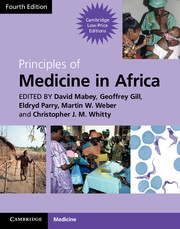Book contents
- Frontmatter
- Contents
- Contributors
- Foreword
- Section 1 Health and disease
- 1 People and the environment
- 2 Food and nutrition
- 3 Refugees and disasters
- 4 Managing a health service with management and financing of drug supply
- Section 2 Mother and child health
- Section 3 Infection: general principles
- Section 4 Major common infections
- Section 5 Bacterial infections
- Section 6 Viral Infections
- Section 7 Protozoal infections
- Section 8 Helminth infections
- Section 9 Fungal infections
- Section 10 Non-communicable diseases
- Section 11 Diseases of body systems
- Section 12 Cancer and Palliative Care
- Section 13 Venoms and Poisons
- Index
- References
4 - Managing a health service with management and financing of drug supply
from Section 1 - Health and disease
Published online by Cambridge University Press: 05 March 2013
- Frontmatter
- Contents
- Contributors
- Foreword
- Section 1 Health and disease
- 1 People and the environment
- 2 Food and nutrition
- 3 Refugees and disasters
- 4 Managing a health service with management and financing of drug supply
- Section 2 Mother and child health
- Section 3 Infection: general principles
- Section 4 Major common infections
- Section 5 Bacterial infections
- Section 6 Viral Infections
- Section 7 Protozoal infections
- Section 8 Helminth infections
- Section 9 Fungal infections
- Section 10 Non-communicable diseases
- Section 11 Diseases of body systems
- Section 12 Cancer and Palliative Care
- Section 13 Venoms and Poisons
- Index
- References
Summary
Levels of care
Peripheral health units, such as health centres, dispensaries or community health posts, are the first places where patients meet the formal public health care system in most rural African districts. People also consult private clinics, pharmacies, formal or informal drug retailers and traditional providers, who are popular for psychosocial and mental health problems, when people suspect spiritual factors, in AIDS, tuberculosis and epilepsy or when orthodox medicine does not meet their needs. Together, these providers represent primary medical care; better district care must involve all of them.
In most countries health care is decentralized and largely devolved to district health services. The Ministry of Health formulates policy, sets standards and ensures quality assurance and is responsible for mobilizing resources and monitoring and evaluation nationally. It oversees and sometimes manages nationally co-ordinated services such as epidemic control. However, the district health management team (DHMT), led by the district medical officer and the district hospital form the backbone of the health services.
The health care system, especially in Anglophone African countries, is organized around the district health service. The district hospital provides secondary level medical care; whilst regional (provincial) and national hospitals provide tertiary specialist care. A referral chain, up which patients move, is thus established but, in reality, most district and tertiary hospitals have busy outpatient departments that give primary care to their community. As urbanization accelerates, urban polyclinics function like district hospitals and provide an intermediate tier between smaller urban clinics and specialist hospitals.
- Type
- Chapter
- Information
- Principles of Medicine in Africa , pp. 53 - 69Publisher: Cambridge University PressPrint publication year: 2013



